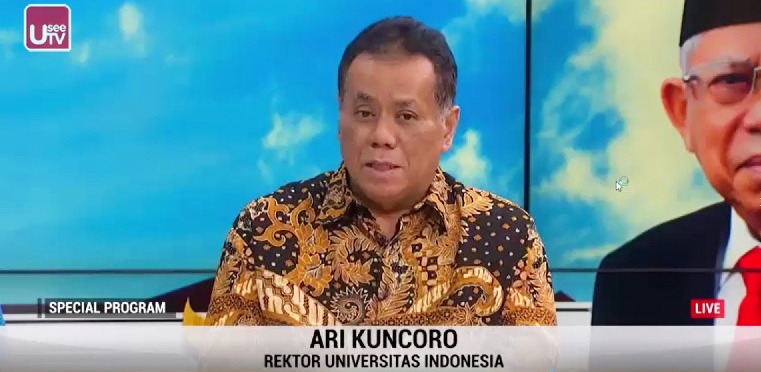Ari Kuncoro: Rearrange the Growth Engine
The second period cabinet structure of President Joko Widodo with 34 ministers and 12 deputy ministers (wamen) – with several wamen having special assignments – is an organization reminiscent of the structure of battle groups in the military. This structure makes it possible to create a team with specific tasks that use the master troops’ resources within the allotted time.
For example, foreign deputies tasked with securing the domestic palm oil industry amid the threat of a European Union boycott are directly under the President through the Coordinating Minister for Economic Affairs and the Coordinating Minister for Maritime and Investment Affairs.
The word investment describes the desire to reorganize the engine of economic growth in recent years supported by public consumption. With a 59 percent share of domestic product (GDP), from 2015 to the first quarter of 2019, consumption grew around 4.8-5.27 percent on an annual basis. Meanwhile, investment accounts for around 32 percent of GDP, growing from 4.24 to 7.94 percent on an annual basis.
With export growth continuing to decline, as a result of the end of the commodity bonanza and trade war, the combination of public consumption and investment produces growth of around 5 percent per year. This figure, when compared to other countries amid slowing global economic growth, is actually quite good. Especially if coupled with inflation of around 3 percent per year which keeps people’s purchasing power.
However, that raises the question, whether we can get better because there are aspirations to get out of the middle income trap as soon as possible.
To see this, a simple simulation is carried out to calculate the estimated investment growth needed to produce economic growth, for example 5.5 percent per year. The latest figure in the second quarter of 2019, investment growth was 5.01 percent. Assuming a consumption percentage of 59 percent of GDP and growing at an average of 5 percent per year, as well as an investment portion of 32 percent of GDP and a gap between investment and production for 2 years, investment growth must be at least 10 percent to achieve 6 percent annual economic growth.
This figure seems reasonable, but it is a difficult task because the highest investment growth since 2013 is 7.94 percent annually, ie in the third quarter of 2018. If a more realistic economic growth target is taken, for example 5.5 percent per year, growth the investment needed is around 8-9 percent per year. That is, an 8 percent investment growth in the conventional way is already quite heavy. So, it is necessary to reset the growth engine out of the box.
Investment behavior
By using the Granger Causality method, a fundamental difference is seen between investment behavior before and after the 1998 monetary crisis. Before the crisis, investment is more determining economic growth, in other words, entrepreneurs are more anticipatory. After the crisis, the opposite is true, economic growth determines investment, in other words entrepreneurs will only invest if economic growth is really good.
What distinguishes these two periods is the great economic reforms of the mid-1980s and 1990s that protected the long-term economic outlook. After 2000 several reforms were carried out, for example regional autonomy, which was only realized later had the side effect of increasing business uncertainty.
The main source of problems is over-regulation and asynchronous regulation between the center and the regions. This can be seen from the report of the World Economic Forum which places Indonesia at 103rd out of 140 countries for convoluted licensing procedures. Meanwhile, the 119th labor market also worsened overall competitiveness.
With the principle of cost comparison in Ricardo (1817) traditional international trade theory, a high cost economy due to human actions will place Indonesia as a country that has a false comparative advantage, only as a producer of raw materials and not suitable for business activities that have high added value. any form.
Free trade area agreements (FTAs) with any party risk making Indonesia just a market. In fact, the industrial revolution 4.0 provided an opportunity for Indonesia to enter the modern manufacturing and service industry by reorganizing production, distribution and marketing which included technological content, and innovation in the products produced.
Until now, it has been difficult to attract investment to be placed in Indonesia because high value-added production activities are difficult to be efficient because of the high cost economy. This also explains why attract investment.

